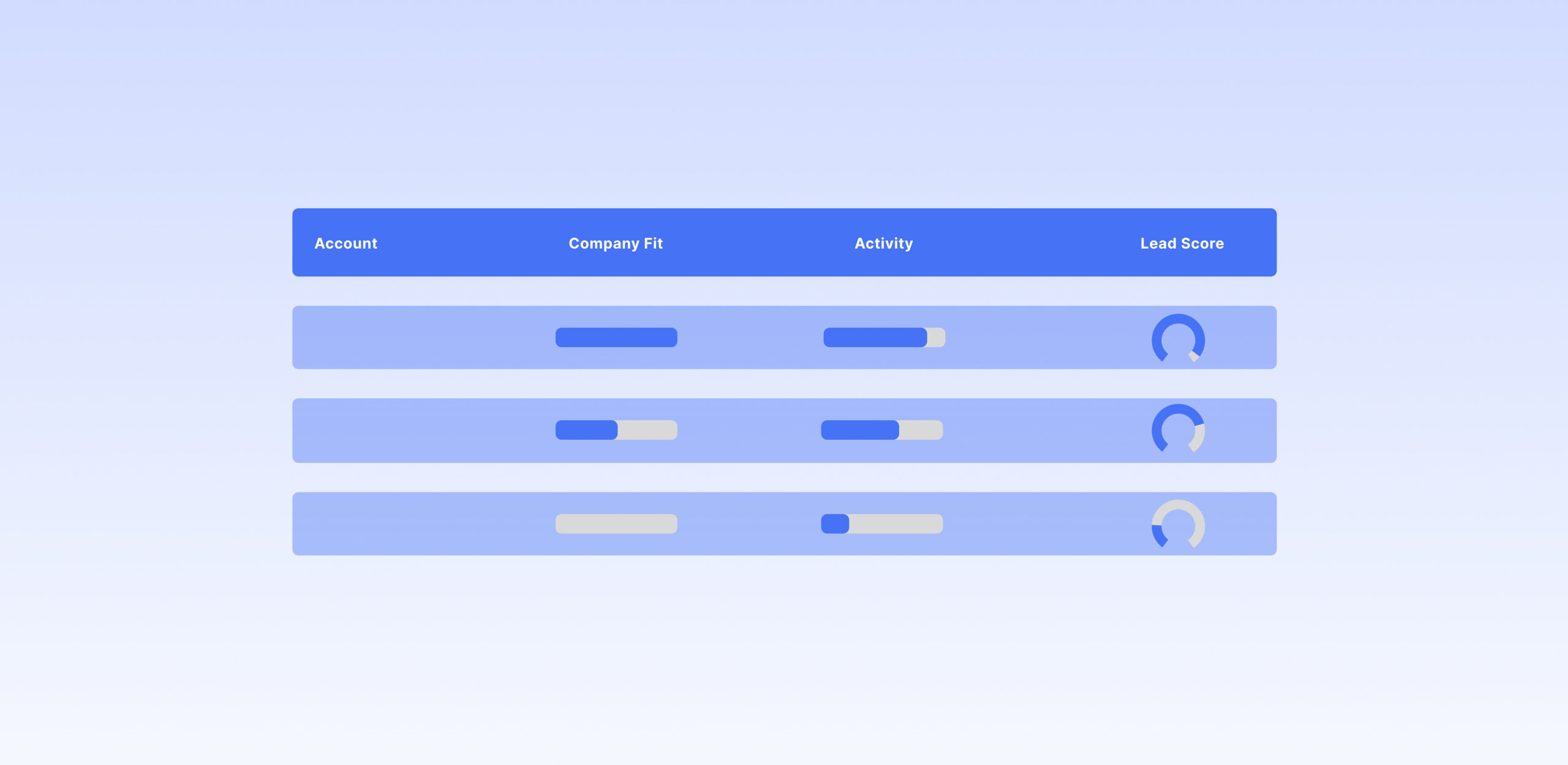In sales, we need to have good time management. We should spend our time on high-potential leads that move us to our sales targets and goals, rather than leads that we need to spend too much time and effort and result in disappointment.
Often, it gets too hard for sales teams to qualify and prioritize those high-potential leads among a lot of data.
A lot of manual work brings inaccuracy with all those long hours and sleepless nights.
We need a finely tuned system for lead qualification and prioritization.
Sales teams spend an average of 6 hours/day researching leads.
Imagine if the sales team could only focus on high-score leads that are far along their buyer journey and likely to convert and achieve higher lead qualification.
That’s why we will tell about using predictive lead scoring to prioritize high-potential leads in this piece.
What is Predictive Lead Scoring?
Predictive lead scoring is a lead scoring method that uses historical and customer activity data to identify and prioritize leads that are most likely to buy.
It uses a machine learning algorithm or predictive modeling that analyze those mentioned data points to score leads. Hence, prioritize high-intent leads among a pool of cold and unprocessed leads by their likelihood to convert.
Keeping a log of cold leads, contacts, or prospects has been a standard business practice. Lead management systems have evolved significantly from traditional Rolodexes to modern Excel sheets in recent decades.
What is the Difference Between Traditional Lead Scoring And Predictive Lead Scoring?
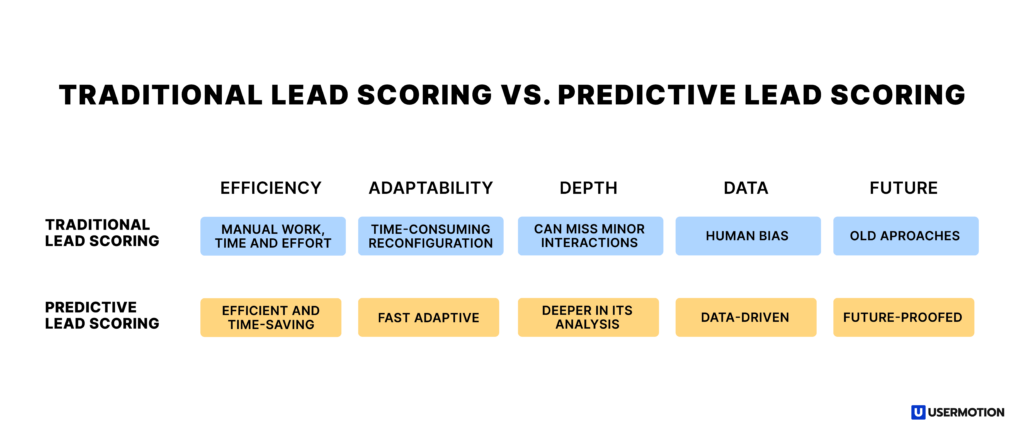
While both traditional and predictive lead scoring aim to prioritize potential customers based on the likelihood of conversion, the processes and accuracy of the two methods differ a lot.
Efficiency and Time-Saving
Traditional lead scoring is laborious. In the old days, the sales team would make an effort to contact every person who glances at the company’s website. If there were 30 recent leads, they needed to guess their pain points, needs, or intentions to buy.
But predictive lead scoring takes the guesswork out of sales. Its systems analyze massive volumes of data in seconds. Therefore, it removes the human error from scoring.
Sales teams may then focus on nurturing high-quality prospects rather than manual analysis.
For example, if you have two leads with different lead scores based on historical and activity data (one is 90 and one is 50), you know which one to focus on to close the deal faster.
Real-Time Adaptability
Real-time adaptability is a major strength of predictive lead scoring. As market trends, customer behavior, and offers change, predictive algorithms can adjust to score leads properly.
On the other hand, traditional approaches may require time-consuming re-evaluation and reconfiguration.
Deeper Insights
Predictive models can spot minor relationships that human processes miss.
For instance, an algorithm may find that leads who interact with certain content and demographic features convert better.
These information help improve lead scoring and marketing strategy.
Data-Driven
The objective data analysis of predictive lead scoring eliminates much of the human bias that may influence traditional lead scoring.
Human input is still important, but data analytics and human knowledge can produce more balanced and reliable outcomes.
Future-Proofing
In an age of fast technology innovation and changing customer patterns, old sales approaches may not work.
Because it uses adaptive machine learning, predictive lead scoring can adapt to change and future.
That’s why predictive lead scoring is:
- Efficient and time-saving
- Data-driven
- Fast adaptive
- Wider in its analysis
- Future-proofed
Real-Time Scoring
By its nature and model, predictive lead scoring offers real-time scoring, where new users are scored immediately based on their ideal customer fit and historical and activity data.
The calculation is updated in real-time as there is new customer and activity data is detected. It just takes a few minutes.
Let’s assume that you have a roadmap tool and your ideal customer profile is SaaS companies with product manager target persona.
When a new product manager sign up from a SaaS company, the predictive lead scoring immediately starts working enriching the data and scoring the lead, by their activity and historical data (your historical customer analysis).
What are Key Data Points for Predictive Lead Scoring?
Without different data points, we might miss a small but important detail in lead scoring; and so do predictive models.
For a functional predictive lead scoring system, you need to nurture the algorithm with complete and fresh customer and product data like;
- Individual customer information like name, email, title, and address.
- Company information such as industry, size, investment, and employees.
- Product usage (PQL metrics) – all actions and interactions users take in-product. For example, product interest, number of users, features used, and usage patterns.
- Engagement – website clicks, downloads, visits, links, and etc.
- Financial details, like if they entered their credit card, or if they subscribed to your product ever before.
- Purchase intentions, such as spending lots of time in your production or scheduling a product demo.
If you want to learn more about the other data points for qualifying leads, you can read our lead qualification article!
What is Predictive Lead Scoring Software?
Predictive lead scoring software runs on an automated and self-learning algorithm. This algorithm assigns a score (between 1 to 100) to each lead that enters the database.
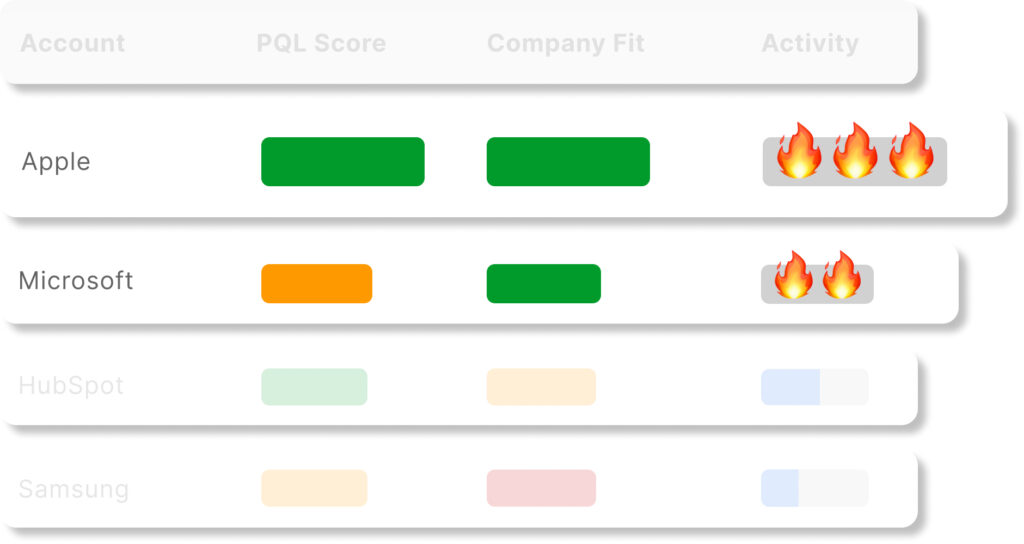
Instead of treating each lead the same, the predictive scoring software prioritizes leads based on data. It prioritizes leads based on demographics, product interactions, interest, etc.
Qualified leads are 10 times more likely to convert as compared to cold leads. In fact, their closing rate average is 14.6%.
Predictive scoring software helps the sales and marketing teams with customer acquisition without additional costs. Rather, they drive more conversion.
These algorithms optimize the lead quality and line up the highest potential prospects for your B2B SaaS. They analyze key product usage and behavioral analysis so that your GTM team can focus on accounts that are most likely to buy.
By incorporating sophisticated AI lead-scoring software, businesses can enhance lead conversion rates, optimize their sales resources, and save valuable time previously spent on less promising leads.
How Does Predictive Lead Scoring Work?
It is a multi-step process of lead qualification. Here’s how it unfolds:
Step 1: Integration
The process begins with the integration of the predictive lead-scoring software with the tech stack.
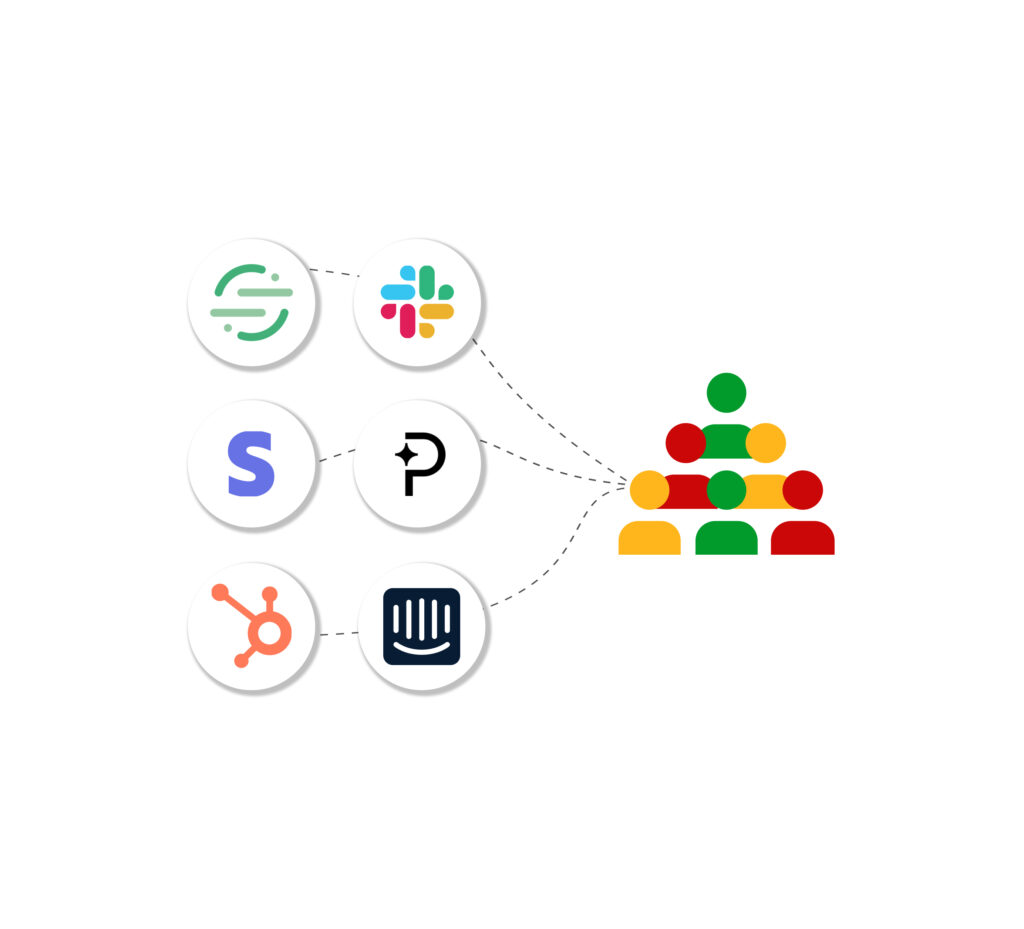
Predictive lead scoring software like UserMotion has different kinds of integration with data repositories, CRM systems, and payment getaways to get data regarding customer impressions.
Step 2: Identification
The second step is identifying and selecting implicit and explicit attributes that can point toward leads with the highest potential of conversion.
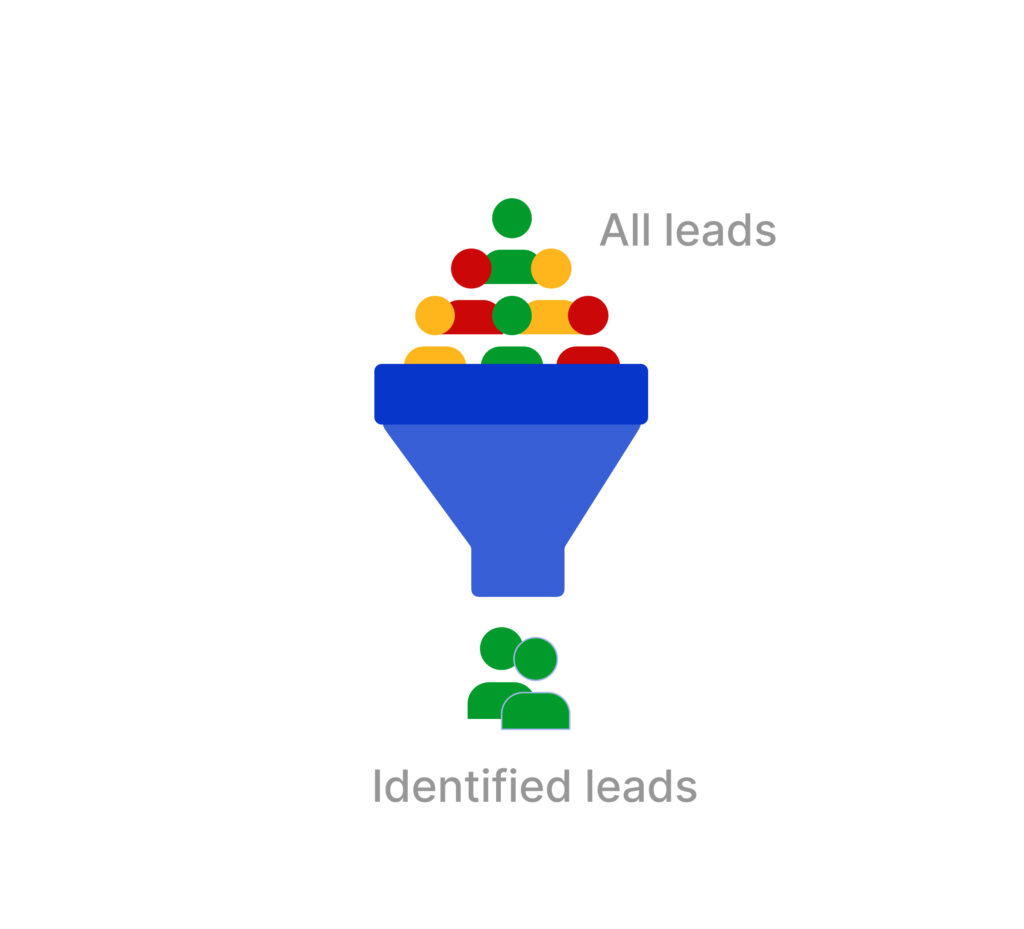
These include factors such as job title, location, employee headcount, industry, website visits, email engagement, white paper downloads, average session rate, and interaction with sales personnel.
For PLG companies, that also includes the product activity of the person.
Step 3: Qualification
The third step is to perform an account-level assessment with the predictive lead scoring software.
It can be best explained with this infographic.
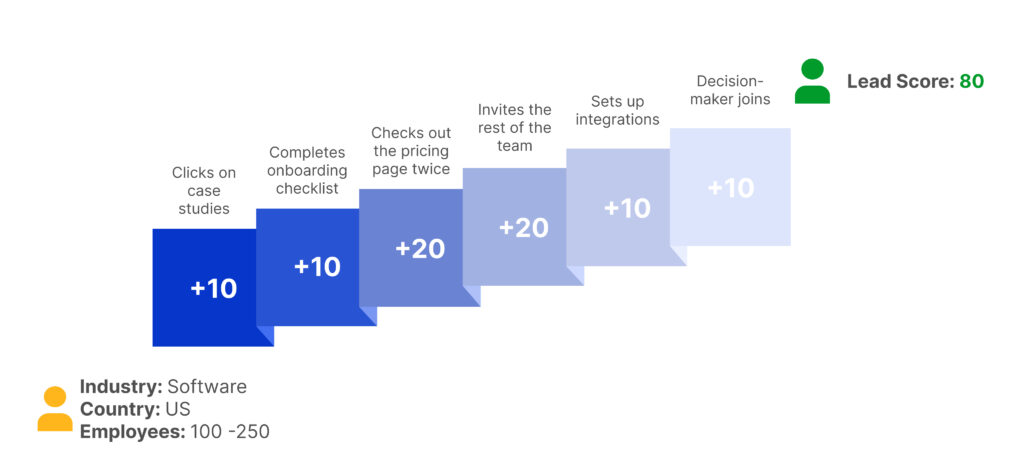
Step 4: Prioritization
Finally, you want to make sure you talk to the best leads first. This step is where your leads are prioritized based on their scores.
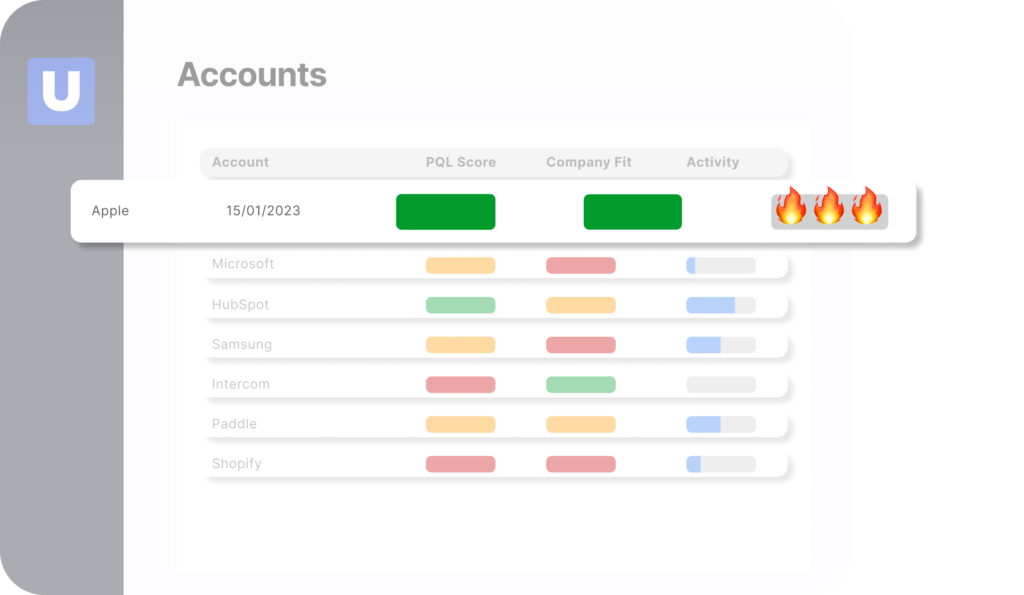
The system uses all the information collected earlier to prioritize leads. At the top of the list are the people or companies that seem most interested in buying. Those at the bottom might be interested but perhaps not as much as the others.
You make sure your team spends their time wisely, talking to those most likely to buy first.
Predictive Lead Scoring Market and Use
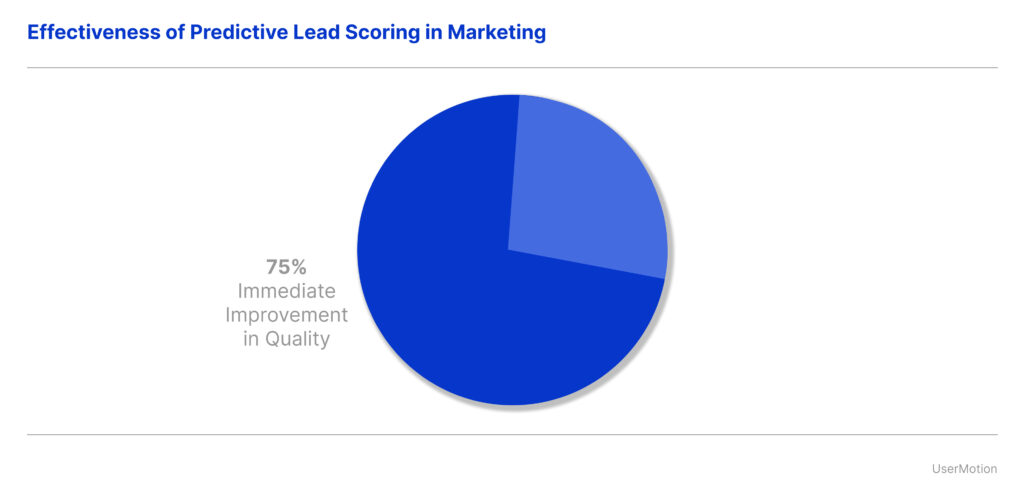
Nearly 47% of marketers have reported an immediate improvement in the quality of leads with the infusion of predictive lead scoring, with 98% of organizations committing to reusing it for their businesses.
More than half a million companies worldwide use predictive scoring systems and other machine learning software to fast-track lead processing and qualification in 2023.
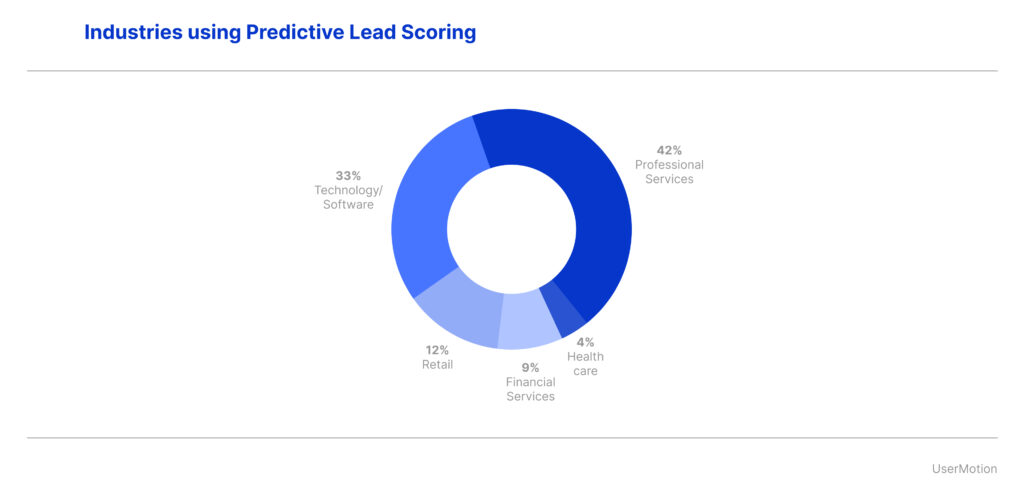
As per recent studies executed in 2023, the top industries using this algorithm are professional services, education, retail, financial services, and healthcare.
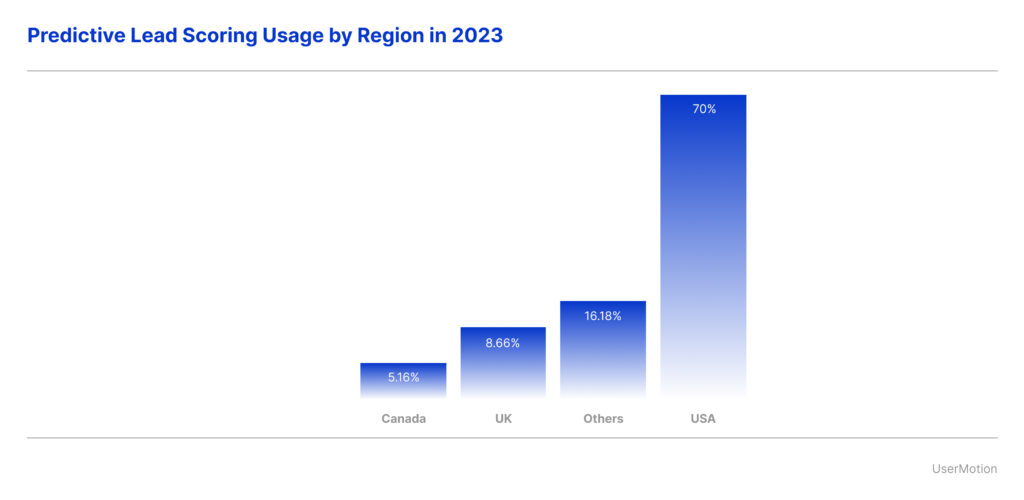
Of the 500,000+ businesses that use predictive lead scoring, 70% of the companies hail from the United States. The United Kingdom secures the second spot with an 8.66% market share, closely followed by Canada at 5.16%.
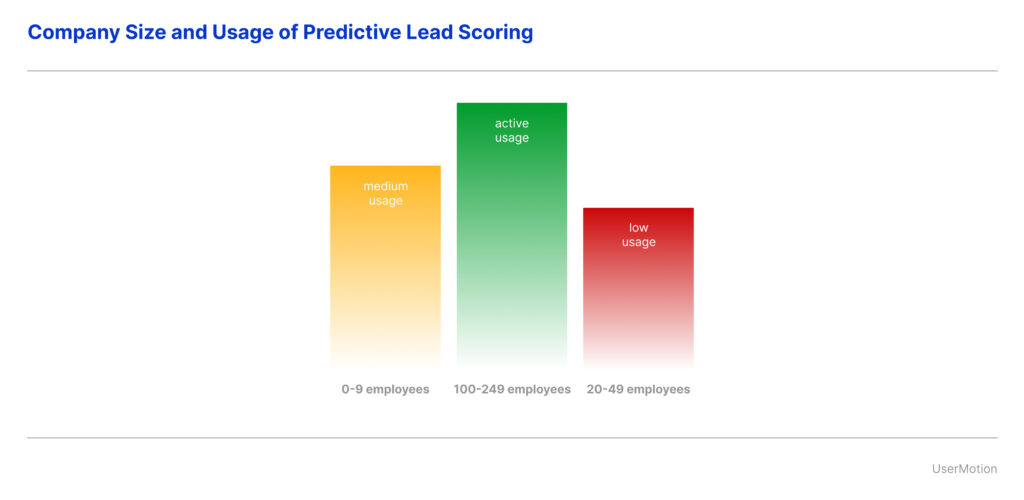
Moreover, companies with 20-49 employees are the most active users of this software, followed by smaller companies with 0-9 employees. Companies with 100-249 employees occupy the third position on the list.
(All data is based on our studies and research through other valuable resources)
Predictive Lead Scoring vs. Traditional Lead Scoring
Lead scoring techniques analyze different data points like customer profile, behavior, and intent to pick the best ones.
In traditional lead scoring, sales and marketing teams focus on a few events that they think can be a conversion opportunity. For example,
- Email open
- Social media engagement
- Click on product announcements
- Download e-book
However, these events have one disadvantage. They are open to be interpreted. In other words, it can cause human error due to misunderstanding.
That’s why, predictive lead scoring unseated traditional methods with its ability to automate the whole process.
Comparing Traditional and Predictive
- Predictive lead scoring is an advanced version of traditional lead scoring. Even though they address the same goal, the predictive approach uses automation. This automation uses various customer touchpoints to rank leads effectively.
- In predictive scoring, patterns from customer categories, product use, and lead goals are crucial. In contrast, traditional scoring relies on set attributes. These are then multiplied by weight factors to get the final score.
- Data needs differ. Traditional methods work well with limited data. On the other hand, predictive tools, being a part of machine learning, hunger for a constant flow of extensive data.
- Scoring categories are also distinct. Traditional methods label leads as low, medium, or high. Predictive scoring, however, ranks leads based on how likely they are to convert.
- When determining outcomes, traditional scoring looks at customer actions. Predictive scoring, instead, pulls insights from data analysis.
- And there’s no waiting around with predictive scoring. If there’s a new lead signal, the system catches it instantly. Your team gets the data without delay.
Traditional vs. Predictive Lead Scoring
| Feature/Aspect | Traditional Lead Scoring | Predictive Lead Scoring |
|---|---|---|
| Basic Definition | Assigns scores to leads based on predefined attributes multiplied with weighting factors. | Uses automation and multiple data touchpoints to prioritize leads. |
| Data Points/Events Focused On | Email open Social media engagement Click on product announcements Download e-book | Multiple touchpoints across the customer’s buyer journey. For example, onboarding, |
| Subjectivity | Events can be misinterpreted, leading to human error. | Relies on automation, reducing the chances of human error. |
| Data Source | Limited data. | Patterns from product usage and lead intent. |
| Scoring | Categorizing low, medium, or high. | Prioritizing based on their potential for conversion. |
| Outcome | Determined by actions taken by the customer. | Derives insights from analytics and real data. |
| Real-time Alerts | N/A | CRM collects data in real-time, alerting teams immediately when a signal is displayed. |
Benefits of Predictive Lead Scoring for B2B SaaS
🚫 No more chasing cold leads
Drowning in leads but struggling to identify the highest potential ones? Predictive lead scoring simplifies the process of lead qualification. Your excellent sales talent should not be wasting time on unqualified leads.
✅ More conversions in less time
It leads to the smartest possible use of resources that enhance conversion rates and complement lead generation and marketing efforts.
🤖 Let algorithms handle the heavy lifting, from pipeline optimization to nurturing
From pipeline optimization to efficient lead qualification and improved lead nurturing, it automates a large chunk of the process, thereby saving the sales team time and effort. By freeing up from essential tasks and databases, lead qualification frees up their time and redirects their efforts to better nurture the leads.
📊 Data isn’t just gathered; it’s looped back to your sales team
Moreover, the data extracted from predictive lead scoring aren’t just hung up after leads are qualified. Instead, it is resupplied to the sales team, as it helps in gaining valuable insights into customer behavior and preferences.
🌪 In today’s fierce market, speed is key
Having a sophisticated and automated process in place allows you to sweep up as many warm leads as you can and gives you a competitive advantage. With more than ever options and stifling competition, it is important for businesses to act swiftly on leads that have the most likely chance of conversion.
Apart from the general benefits, here’s how it helps each part of the business:
Sales Teams
Sales teams perform better when they focus their efforts on leads with a higher likelihood of conversion.
With insights from predictive lead scoring, sales teams can tailor their messaging to address the specific needs and pain points of each lead. This personalized approach increases the chances of resonating with the prospect and driving conversions.
Additionally, this algorithm shortens the sales cycle by prioritizing leads that are further along the way in the buying process.
It also gives data-driven insights about the various factors that are contributing to successful conversions.
Is it the website copy?
Is it the pricing strategy?
Or is it freemium/freebies?
With predictive lead scoring, sales teams get a chance to leverage this information to refine their strategies and focus on areas that are most likely leading to conversion.
Growth Teams
Optimized acquisition channels enable the growth teams to focus on the areas brimming with high lead quality. Growth teams are better off knowing the buyer journey of their best leads. When the GTM strategy is deployed on many fronts, it is harder to quantify the channel that is driving the hottest leads.
Identifying the most effective channel of lead procurement allows marketing teams to get on the same page and allocate resources in a way that identifies the ROI in the best way.
Lastly, predictive lead scoring segments the audience in an effective fashion and enables the growth teams to create tailored marketing efforts and campaigns that resonate with different lead segments and higher engagement and conversions.
Customer Success Teams
Churn is the bane of every B2B SaaS business. The data insights extracted from predictive lead scoring can also be used by the customer success team to guide them in engaging with the customers and being proactive in addressing their concerns.
It enables customer success teams to understand the specific needs and preferences of each customer and deliver smooth onboarding and tailored support and guidance, which leads to high customer satisfaction and loyalty.
Another notable benefit of AI lead scoring is cross-selling and upselling existing leads by identifying opportunities based on their profile and behavior.
How UserMotion Prioritizes High-Quality Leads With Predictive Lead Scoring?
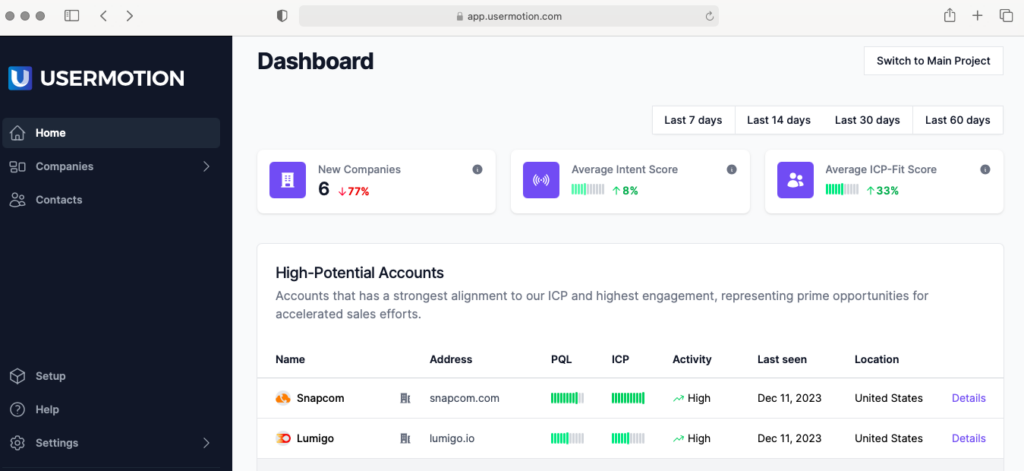
UserMotion’s plug-and-play sales intelligence tool integrates with your systems and collects all your leads in a centralized dashboard.
The high-potential accounts are ranked based on their activity, intent score, product qualification, and ICP score.
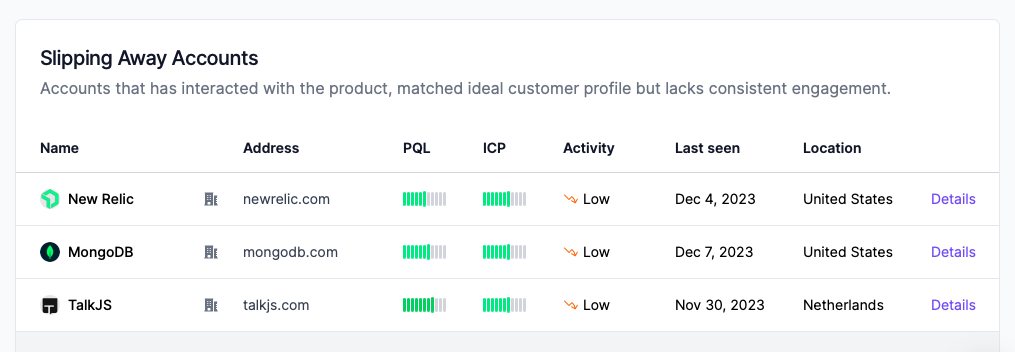
It also shows leads slipping away, so your sales team can be proactive and nurture accounts with diminishing user activity.
What’s more? UserMotion integrates with your tech ecosystem and handles the data repositories, contact details, and payment gateways for all your leads.
Now, that’s an excellent CRM system for all your contacts. Just click on ‘details’ and get started.
UserMotion’s unique CRM and sales intelligence systems put you miles ahead in the sales process. Snag your spot in our free trial today!
Conclusion
In the dynamic world of B2B SaaS, predictive lead scoring isn’t a mere luxury—it’s a necessity.
But let’s be real for a moment.
Without knowing who is your BEST lead, you are wasting time, effort and resources.
Predictive lead scoring streamlines operations, improves lead conversion rates, optimizes resources, and drives revenue growth.
FAQs
1. What is predictive lead scoring?
Predictive lead scoring is a data-driven method that uses analytics and machine learning to evaluate lead quality based on the likelihood of conversion. Unlike traditional lead scoring, predictive scoring automates the process, reduces errors, and adapts dynamically to recent lead conversion data.
2. How does predictive lead scoring benefit B2B sales teams?
Predictive lead scoring offers several benefits for B2B sales, including automated lead ranking, enhanced lead segmentation, accurate predictions, shortened sales cycles, and improved alignment between marketing and sales teams. It optimizes resource allocation, maximizes ROI, and contributes to better overall efficiency.
3. How does predictive lead scoring work in B2B sales?
The implementation involves data collection from CRM systems and other sources, modeling key variables, scoring leads based on conversion likelihood, and integrating the scoring model into CRM systems. This process streamlines lead prioritization, providing sales teams with valuable insights and boosting overall efficiency.
4. How does UserMotion prioritize high-quality leads using predictive lead scoring?
UserMotion’s tool collects leads, ranks them based on behavior like webpage visits and demo engagement, and integrates with your tech ecosystem for a seamless CRM system. The tool combines expert-made lead signals with your company’s Ideal Customer Profile (ICP) signals, ensuring a prioritized list of high-quality leads.
5. How does predictive lead scoring address the challenges of bias and manual errors in lead scoring?
Predictive lead scoring eliminates bias and manual errors by relying on data-driven predictions and machine-learning algorithms. It ensures objectivity and consistency in lead qualification, as the model evolves with recent conversion data, reducing the risk of outdated or inconsistent metrics seen in traditional lead scoring methods.

